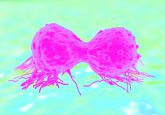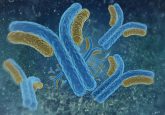Lab-on-a-chip: detecting cancer biomarkers

A study published in Biomicrofludics describes how the lab-on-a-chip method can analyze biomolecular targets from blood. Scientists from the University of California (CA, USA) and Brigham Young University (UT, USA) utilized the silicon-based molecular detection platform to process blood samples, which is of huge benefit as the instruments are small, cost effective and require small test volumes.
Researchers demonstrated that the miniaturized lab approach can identify multiple biomarkers on the fluidic microchannels that are integrated on one device; reducing experimental time and increasing reliability.
Each chip filters the blood cells and translates the optical data into an excitation pattern.
“Our approach uses optofluidic chips where both fluid processing and optical sensing are done on a chip, allowing for further miniaturization and performance enhancements of the chip system” explained led scientist Holger Schmidt (University of California).
Future research will explore identifying individual DNA biomarkers and integrating more optical elements on the chip. Researchers hope to increase the capabilities of lab-on-a chip, allowing protein biomarkers and nucleic acids to be analyzed.
Schmidt commented on the potential importance of the method: “In the near term, we hope to build new diagnostic instruments for molecular diagnostics with applications in oncology and infectious disease detection, both viruses and (drug-resistant) bacteria…In addition, these chips could be very useful for fundamental research in molecular biology and other life sciences since they can provide analysis of single nano- and microparticles without the need for expensive equipment. And they require a relatively low amount of experimental skills.”
Sources: Cai H, Stott M, Ozcelik D et al. On-chip wavelength multiplexed detection of cancer DNA biomarkers in blood. Biomicrofludics. doi:10.1063/1.4968033 (2016) (Epub ahead of print); http://www.medicalnewstoday.com/releases/314759.php






